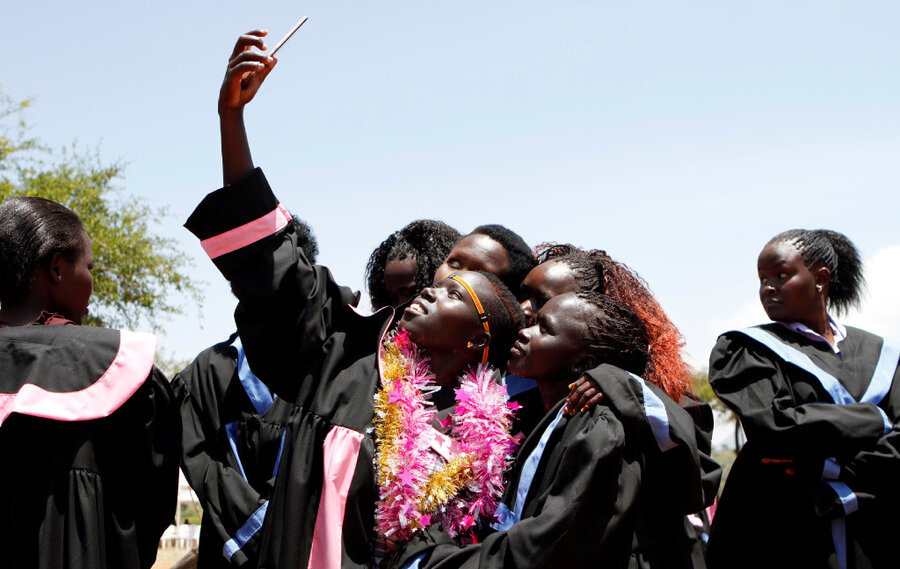Why 10-year-old girls can lift the world
Loading...
Speaking at a conference this week, Nobel Peace Prize winner Malala Yousafzai recalled a childhood friend in Pakistan who was forced to marry at age 11, ending her life as a school student. Ms. Yousafzai, famous advocate for girls’ education, said schooling means far more for girls than just reading books or passing exams. For many, it is a path to freedom.
“We need to inspire women to be beyond limits,” she said.
The tale of her friend makes a case for a new approach by the United Nations and many others trying to lift the world’s poor: Focus particularly on girls. In fact, focus on 10-year-old girls. They are at a critical juncture in their life in both challenges and potential. Investing in that demographic has the greatest prospect to improve less-developed nations, according to the UN Population Fund in its annual report this week.
The UN agency even puts a dollar sign on the worth of tapping this potential: If all the 10-year-old girls in the 48 countries with the highest gender inequality could finish secondary school, their earnings could add $21 billion a year to the total economy of those countries.
Right now, much of that economic potential is lost because of discrimination against girls. In many countries, daughters are seen as financial liabilities. The UN estimates that, on average, 47,000 girls under 18 are married each day. Twice as many girls as boys will never start school. And physical abuse or the threat of violence against girls teaches them to censor themselves in how far they can go.
Thus the UN report is refreshing in highlighting girls as essential for global development. “The future of 10-year-old girls will shape our collective futures,” the report states.
This is a welcome shift that looks beyond the problems that girls face and focuses on their capabilities. Just adding one year to a girl’s education, for example, increases her income more than every comparable year for a boy.
In her work for her nonprofit group, Let Girls Learn, first lady Michelle Obama has seen this issue close up. In a recent speech, she summed up what she has learned:
“The more I traveled and met with girls and learned from experts about this issue, the more I realized that the barriers to girls’ education isn’t just resources. It’s not just about access to scholarships or transportation or school bathrooms. It’s also about attitudes and beliefs – the belief that girls simply aren’t worthy of an education; that women should have no role outside the home; that their bodies aren’t their own, their minds don’t really matter, and their voices simply shouldn’t be heard.”
Flipping around those attitudes requires paying attention to what girls have to offer. As the UN report reminds us, investing in girls can be the key to ensuring global prosperity.







